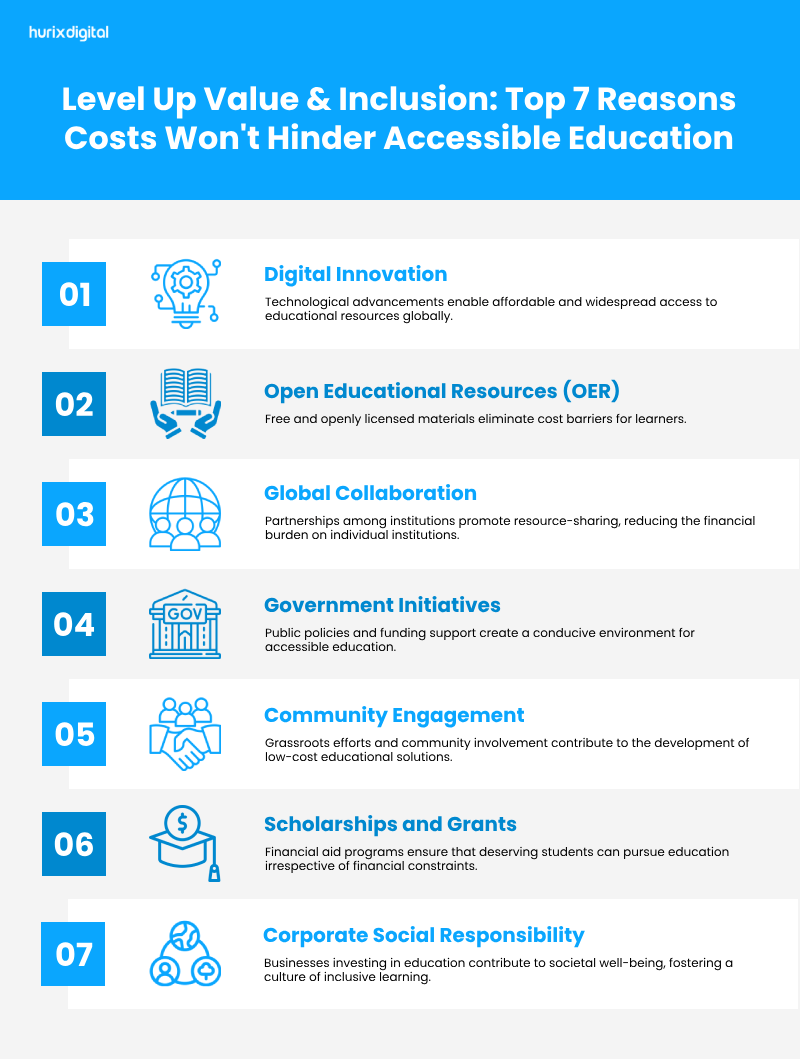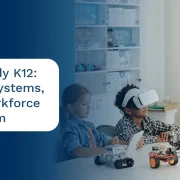Empower education inclusivity! Uncover 7 reasons costs won’t hinder accessibility: digital innovation, OER, global collaboration & more. Level up value and inclusion in education!
Transform education with Hurix Digital! Overcome cost barriers for accessibility. Level up value and inclusion. Contact us now! to know more!

Understanding Accessible Education
Accessible education is increasingly recognized as a fundamental right, ensuring learners from all backgrounds can gain knowledge. Various factors contribute to making education less expensive and more inclusive.
Digital Innovation in Education
Technological advancements play a significant role in broadening access to educational resources. Online platforms and digital tools allow for:
- Cost-effective learning: Many resources are available for free or at a lower cost.
- Remote access: Students can learn from anywhere, removing geographical barriers.
A recent report highlighted that 70% of students prefer online learning formats, demonstrating a shift towards digital education.
Open Educational Resources (OER)
Open Educational Resources are a game-changer in promoting accessible education. These materials, which are freely available and openly licensed, include textbooks, courses, and multimedia content. Their benefits include:
- No cost: OER eliminates the financial burden of purchasing textbooks.
- Customization: Instructors can adapt resources to fit specific course needs.
Research shows institutions using OER have reported a reduction in textbook costs by up to 50%.
Global Collaboration and Partnerships
Collaboration between educational institutions enhances resource-sharing and minimizes costs. By pooling resources, schools can:
- Share best practices: Institutions can learn from each other’s successes.
- Reduce duplication of efforts: This leads to more efficient use of funds.
Such partnerships often lead to innovative solutions that benefit students globally.
Government Initiatives Supporting Education
Government policies and funding play a crucial role in supporting accessible education. Key initiatives often include:
- Funding for underprivileged institutions: These programs help schools in low-income areas.
- Grants for educational technology: Such funding promotes the integration of tech in classrooms.
Conclusion
Accessible education is attainable through collaborative efforts and innovative solutions. By harnessing technology, fostering community engagement, and leveraging government support, barriers to education can be significantly reduced. This collective effort ensures all learners have the opportunity to succeed, regardless of their financial situation.




